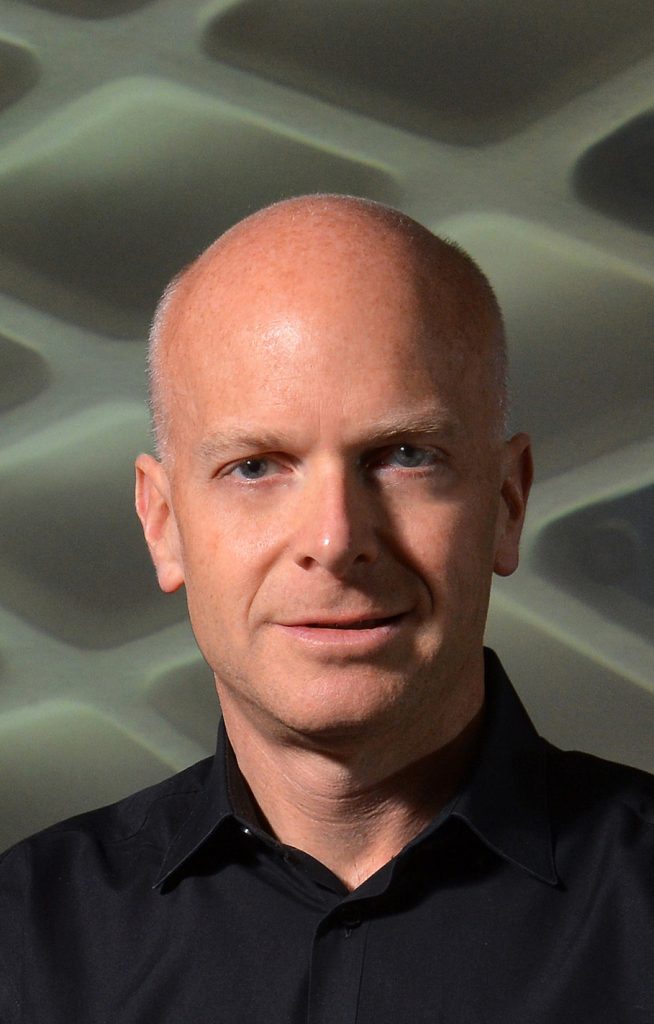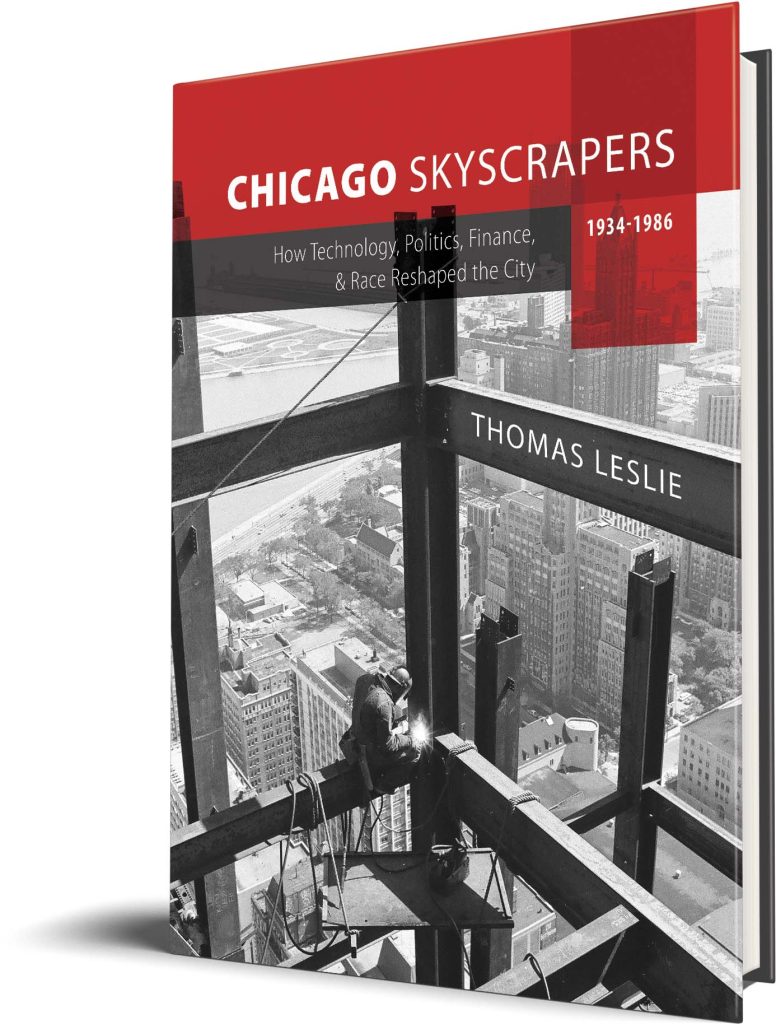Thomas Leslie, author of Chicago Skyscrapers, 1934-1986: How Technology, Politics, Finance, and Race Reshaped the City, answers questions on his new book.
Q: Why did you decide to write this book?
Chicago’s skyscraper history has fascinated me since my family moved to downstate Illinois when I was 12. I remember seeing the John Hancock Building for the first time and being able to vaguely understand how it stood up—its shape and cross-bracing felt like generous explanations on the part of its designers. I’ve worked my way up to it and the city’s other postwar skyscrapers—my 2013 book covered Chicago’s earlier generation of high-rise construction and this has always felt like a natural sequel to that study.
Q: What is the most interesting discovery you made while researching and writing your book?
Among many others, that nearly all of the city’s tall buildings of the 1960s were no accident. One of Mayor Daley’s first actions when he took office in 1955 was to start the process of laying out the “Central Area Plan,” which was a blueprint for re-shaping downtown—along with the rest of the city. Skyscrapers were a crucial tool in this. They reconfigured the Loop itself, provided housing for the professional and managerial workers that nourished downtown’s revival, and they solidified racial and political lines by concentrating Black voters in public housing towers on the South and West sides.
Q: What myths do you hope your book will dispel or what do you hope your book will help readers unlearn?
The most pervasive myth about this era of Chicago skyscrapers is that these buildings were pure statements of structural art and expressed building technology. It’s true that the architects of this era were particularly fluent in both realms, and that buildings like Inland Steel or the Civic Center are remarkable, compelling statements showing how these can be integrated into works of genuine beauty. But the social, political, economic, and industrial forces acting on them were also pervasive, and these architects also had to navigate these less-celebrated but equally impactful influences.
Q: Which part of the publishing process did you find the most interesting?
Researching is always the most exciting part of a big project like this. I go in with a few ‘anchor’ projects that I feel I know fairly well, but finding new stories, new connections, and new directions to follow always supersedes whatever I’d planned. The work of previously unheralded or under-appreciated architects and engineers really expanded my original outline; finding those and seeing how they enriched and helped complete the emerging narrative of the book was incredibly rewarding.
Q: What is your advice to scholars/authors who want to take on a similar project?
Dive in and trust your instincts. If a topic fascinates you, however narrow, follow the material and see where it takes you. If you’re interested, there are readers somewhere who will want to share the adventure.
Q: What do you like to read/watch/or listen to for fun?
I read mostly non-fiction, in particular history and science. I admire writers like John McPhee who can conjure up a truly compelling read out of seemingly nothing (oranges!). A long research project on Italian engineer Pier Luigi Nervi left me with a love of Italian cinema, which lets me practice my Italian, but I am also a huge baseball fan and during the season that’s usually my evening entertainment.

Thomas Leslie is an architect, educator, and author. His books include Beauty’s Rigor: Patterns of Production in the Work of Pier Luigi Nervi and Chicago Skyscrapers, 1871–1934.

